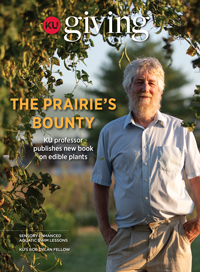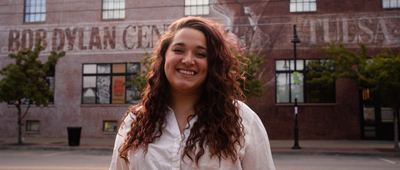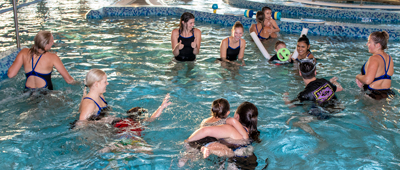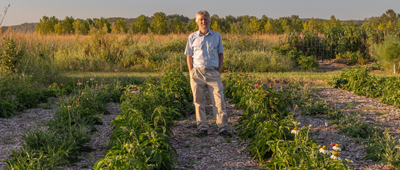KU Giving Magazine
A Legacy of Service to KU
Valerie Gieler
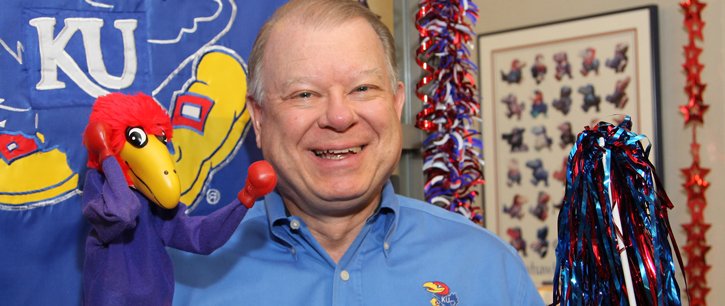
KU Endowment President Dale Seuferling to retire after decades of leadership
When Dale Seuferling first stepped foot on Mount Oread as a journalism student in 1973, he had no idea he would spend the vast majority of his career on campus. After graduation, he worked briefly as a radio news reporter before joining the KU Office of University Relations. In 1981, he started at KU Endowment as director, public relations. The next year, he transitioned to frontline fundraising and held positions of increasing responsibility before being named president of KU Endowment in 2002.
Seuferling says it has been a true honor and privilege to partner with donors and serve the University of Kansas for the past 41 years. His contributions speak for themselves, with involvement in three of the four major fundraising campaigns undertaken by KU Endowment and many other milestones along the way. Seuferling will retire this summer and is looking forward to many new experiences that lie ahead. This will, of course, include lots of KU games, performances and events. After all, once a Jayhawk, always a Jayhawk!
Where is your favorite place on campus? What about KU traditions?
The Memorial Campanile is my favorite because it is such an iconic representation of KU and one of the most memorable visual images. Every graduate has an attachment with it from their Commencement. The Campanile has a personal significance for me because this is where my wife, Marianne, and I became engaged. We also watched both of our daughters graduate there.
Walking down the Hill is a great KU tradition, and the awe our Jayhawk mascots generate in the eyes of children is unmatched. And who could leave out the connection with our famous chant? As I have traveled around the world, anyone seeing the KU logo or a Jayhawk always elicits a Rock Chalk!
What do you remember about your first days at KU Endowment?
You immediately felt like you were joining a family and not just going to a place of employment. It was a very welcoming atmosphere where people genuinely wanted to get to know the new person. Our office was smaller then and we were in one of the few buildings on West Campus, so it was quieter. This may sound a bit cliché — it really was a simpler time. All donor meetings were face-to-face, and we actually sent faxes.
How have things changed?
KU Endowment is still warm and friendly, but we are much larger and a greater part of the campus fabric. Today’s electronic communications are more efficient. However, it can lead to a subtle misunderstanding. There is still a place for “old-fashioned” face-to-face communication.
From an endowment perspective, philanthropy was once considered the frosting on the cake for public universities. It was needed for enhancements or special projects because most operational expenses were supported primarily by state appropriations and tuition. Now, philanthropic support is needed for all areas, which has long been the case at private universities.
Do you have special KU memorabilia you would not want to part with?
I am the original and only holder of the IM 4 KU license plate in the state of Kansas. So, I have had it as my license plate since 1981, coincidentally when I started working at KU Endowment.
What role do universities play in our communities, and why should we invest in them?
This gets to the heart of what has always inspired me about this profession. The work we do at a comprehensive public university such as KU contributes to the betterment of our communities and society. Educating students and preparing them for success; the research mission and advancing discovery; celebrating the arts and humanities; the academic medical center improving health and conquering diseases — all areas improve our lives. We all hope to leave the world a better place, and universities have great potential for delivering on that hope.
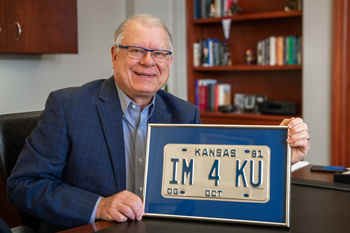
LOYAL LICENSE: Dale Seuferling is the original and only holder of the IM 4 KU license plate. He purchased the plate in 1981, coincidentally the same year he started working at KU Endowment.
Photo by Mark McDonald
Photo by Mark McDonald
You were part of starting Women Philanthropists for KU and the Student Endowment Board. What was the inspiration for doing so?
I believed it was important to give women more opportunities to be informed about what the university is doing and develop networks to become involved in volunteer boards and committees at KU. Women Philanthropists for KU is an avenue for greater engagement and giving back. Many members have gone on to serve in other areas, and several have become trustees.
For the Student Endowment Board, the principal motivation was a change from only engaging students after they graduated. We need to interact with students while they are on campus to educate them about philanthropy and what it has done to enhance the university and their opportunities. It is powerful when students understand someone they did not know believed in them and invested in their future. It also is meaningful for donors to meet students who are benefiting from their support.
What are some challenges facing higher education and foundations today? Why are you optimistic for the future?
Universities need to quickly adapt to the changing marketplace and provide what students are looking for and need to be successful. KU’s leaders recognize the need to adapt and are forward-thinking about making changes to serve the needs of students and society. I believe they will guide the university to a greater future.
What is your favorite part of the job?
I love working with people. It is motivating to work with faculty in multiple disciplines and determine how we can support their goals through philanthropy. There are always new ideas, needs and projects. The next step is like trying to find the solution to a puzzle. It involves thinking about where support could come from and who might be inspired by the opportunity. We try to find donors who have the same interests and goals as the faculty members and then bring them together.
How did your KU education prepare you for your career?
The most important thing I learned was how to be a thoughtful communicator and good listener. If you take the time to ask open-ended, probing questions, donors often share what is important to them. Even though they have had a career in a certain field, they may reveal they have a passion for helping solve a disease because it affected their family or they want to make an educational opportunity available because of their own experience.
What advice do you have for the next KU Endowment president?
I have three pieces of advice: First is to be passionate about celebrating KU’s role in contributing to society and improving the lives of people; second is to do all you can to help nurture and empower the potential of KU Endowment team members; and third is to always focus on the importance of building relationships with donors.
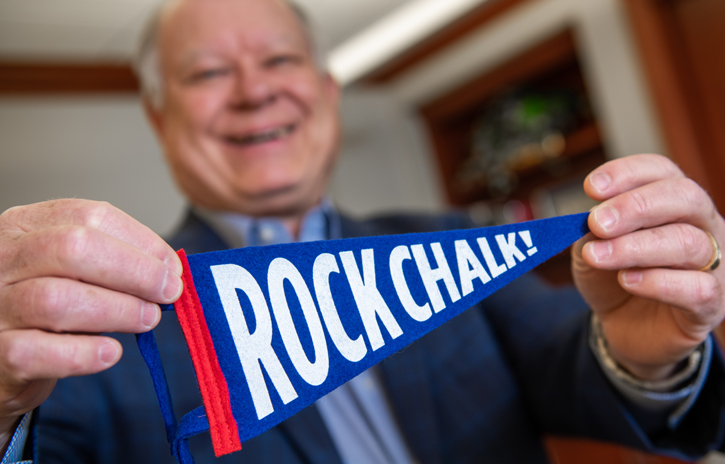
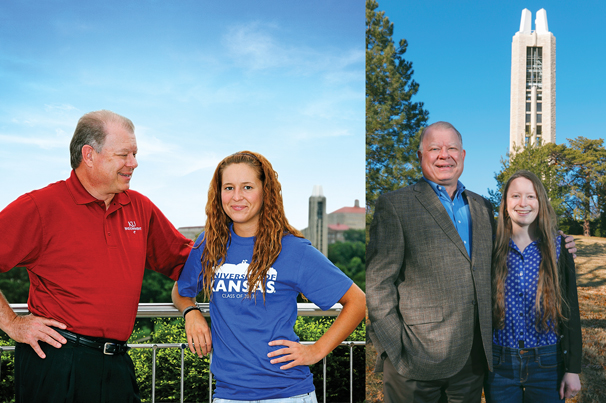
Photo by (Left) KU Endowment. (Right) Mike Yoder.
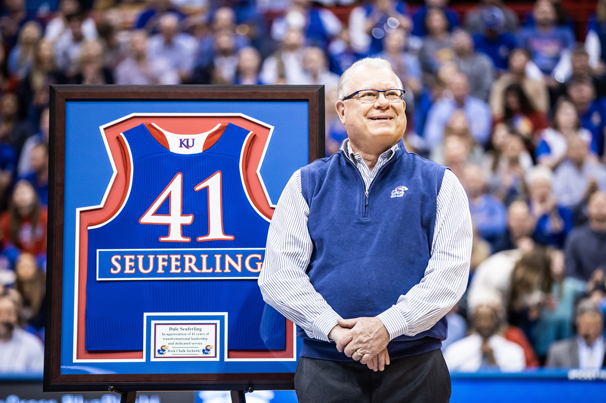
Photo by Missy Minear / KU Athletics
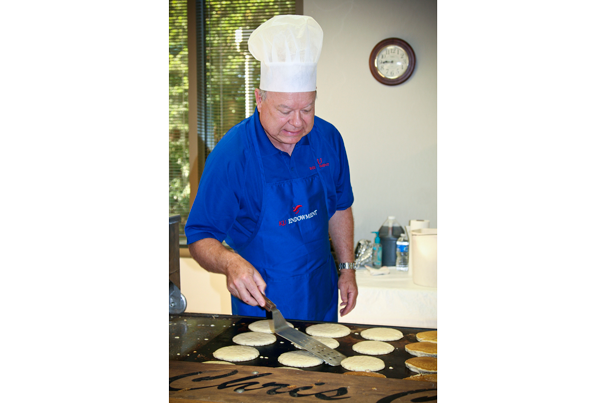
Photo by Melissa Meyer / KU Endowment
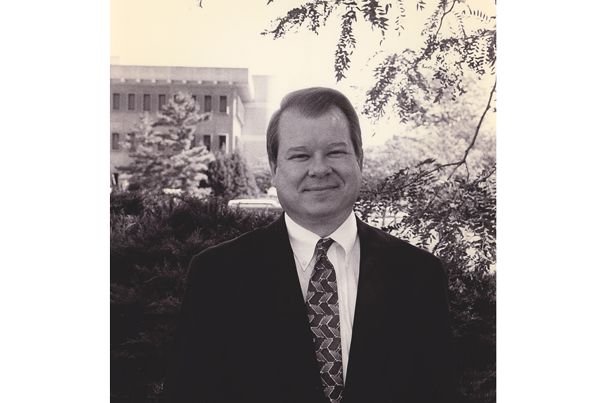
Photo by KU Endowment
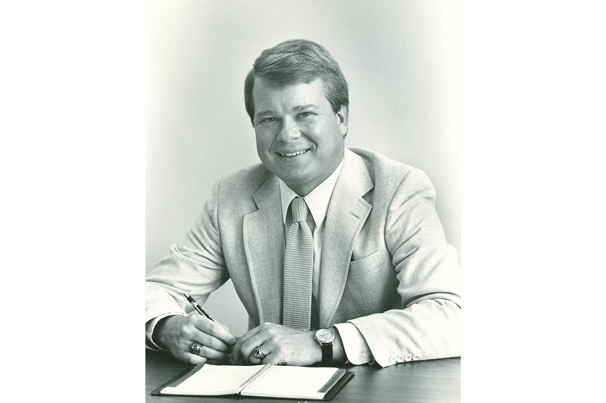
Photo by KU Endowment
